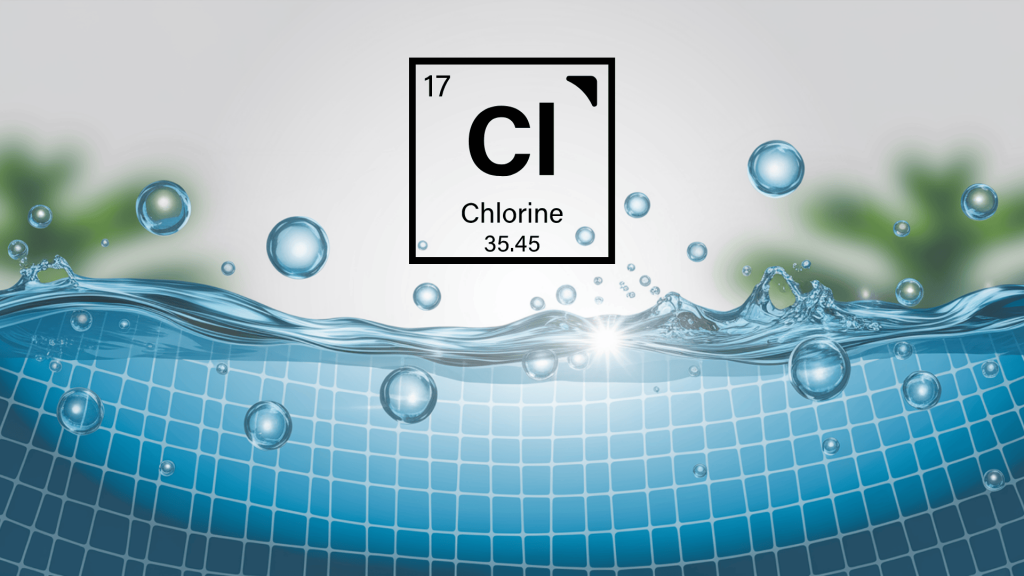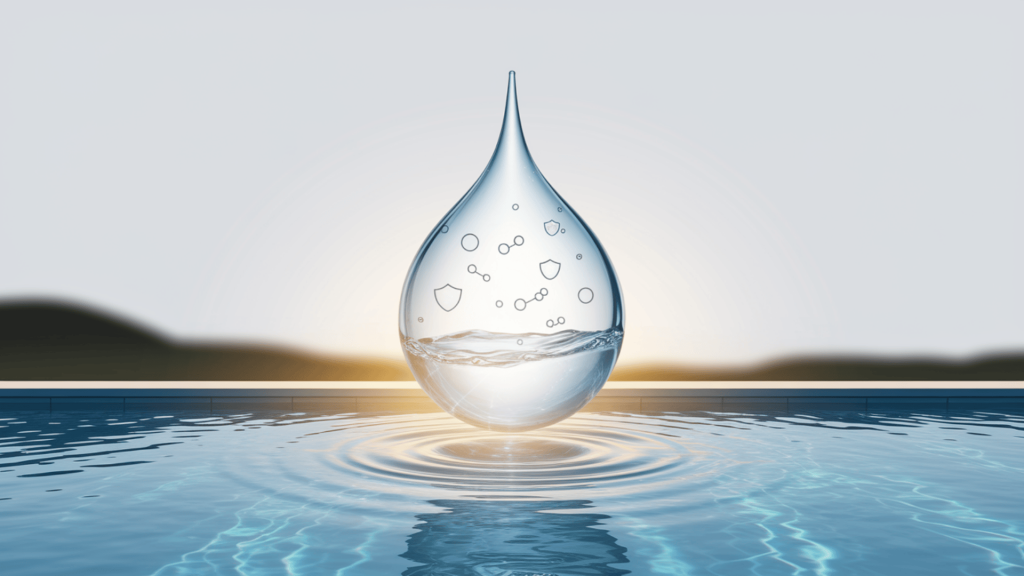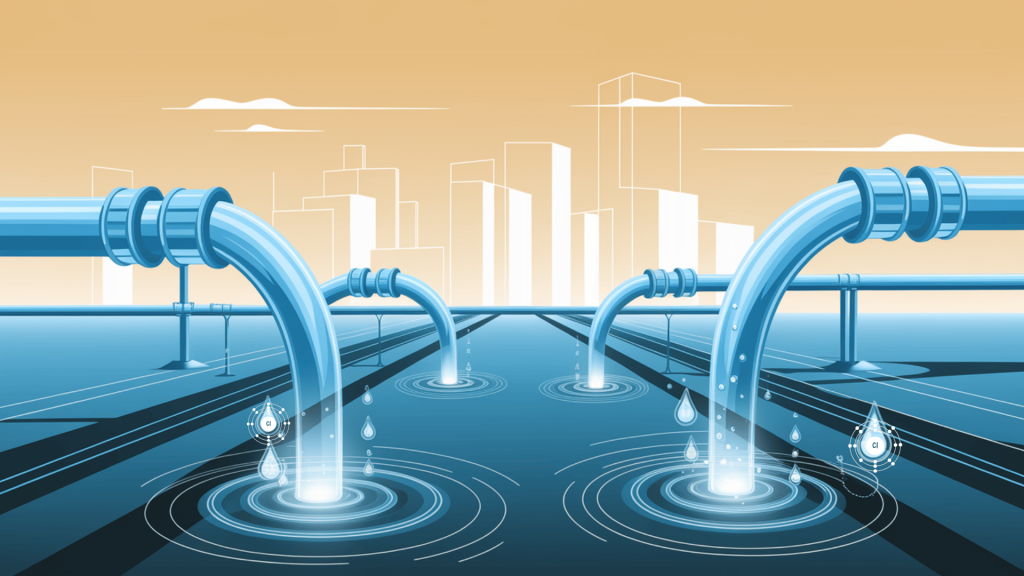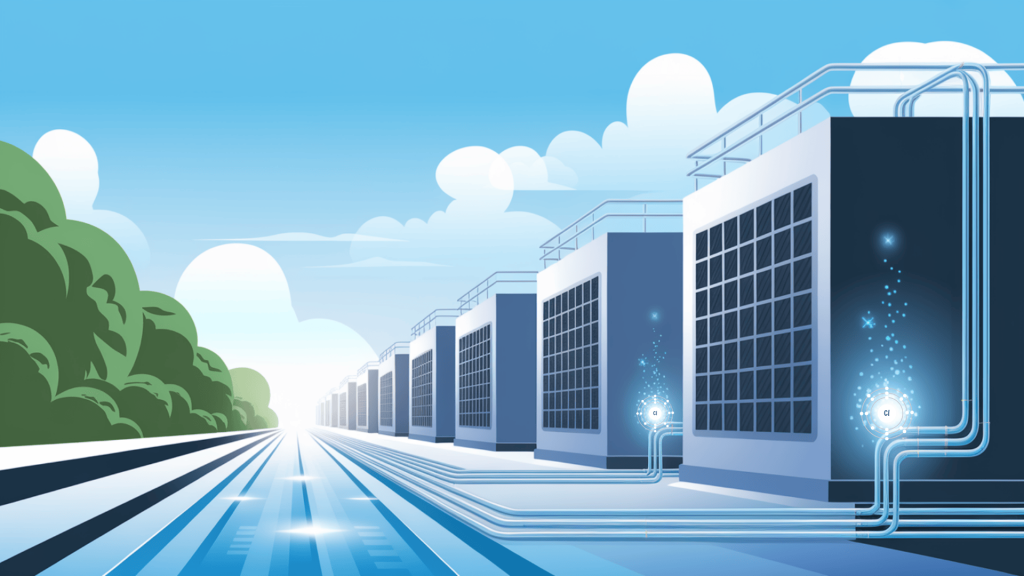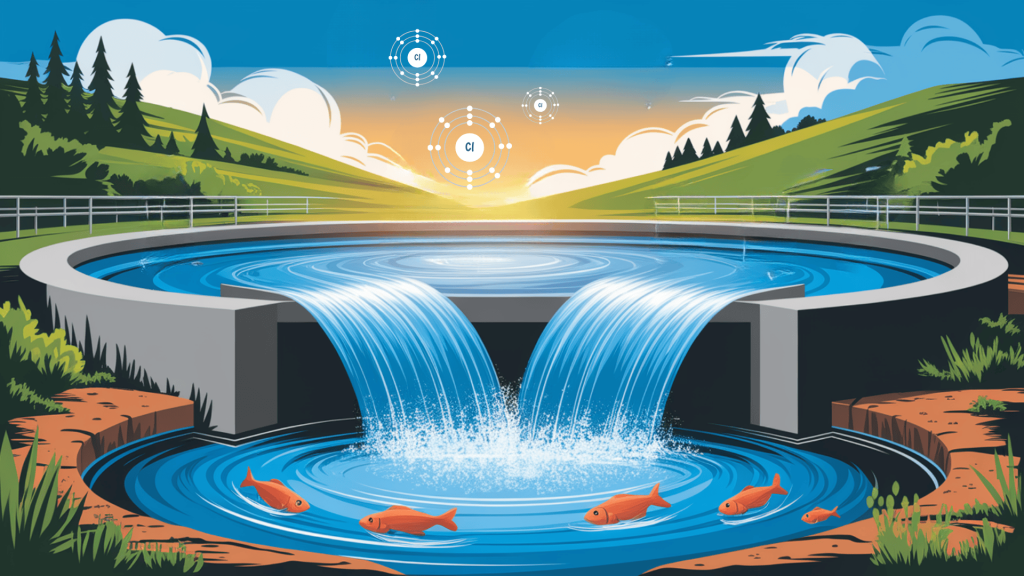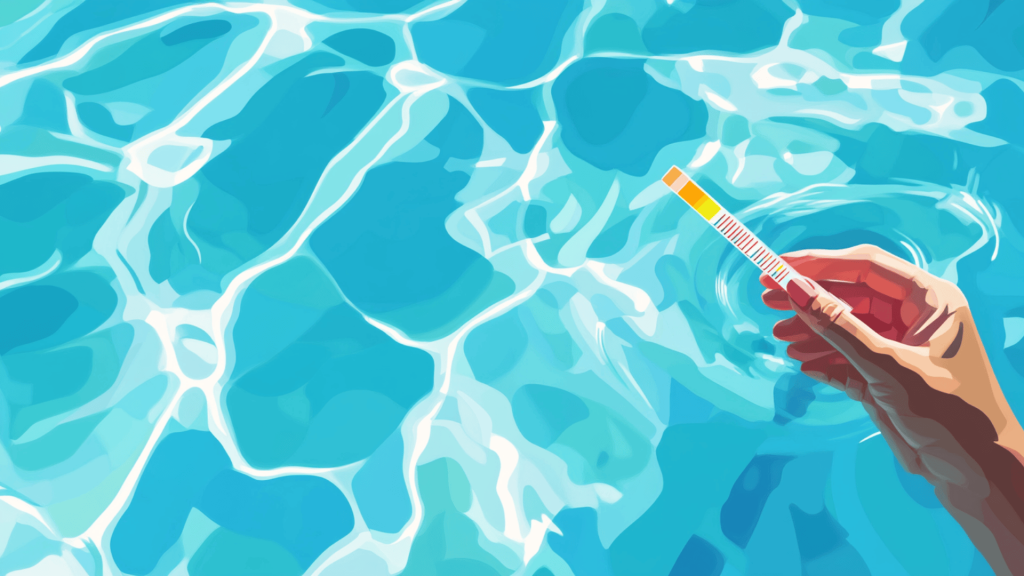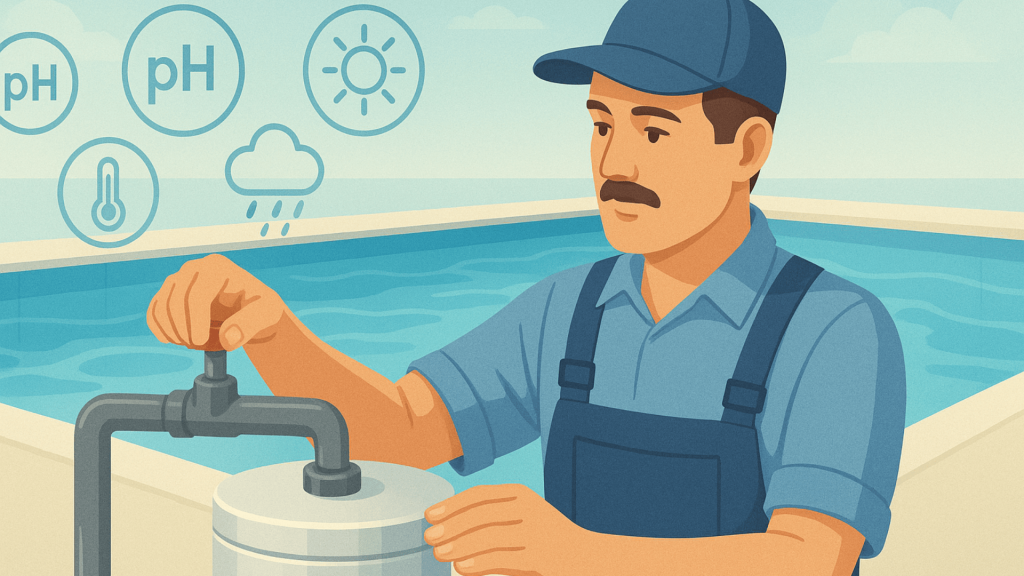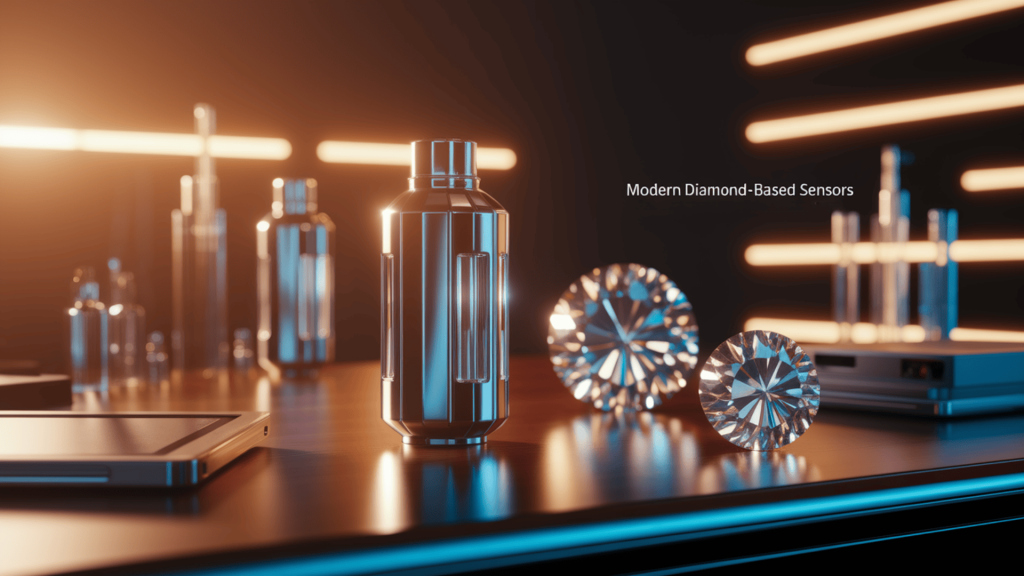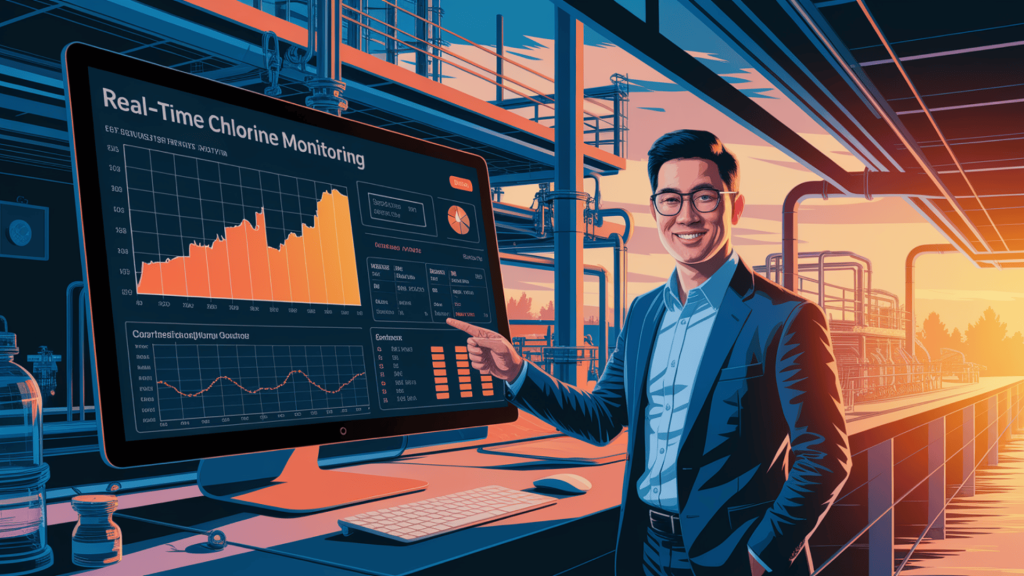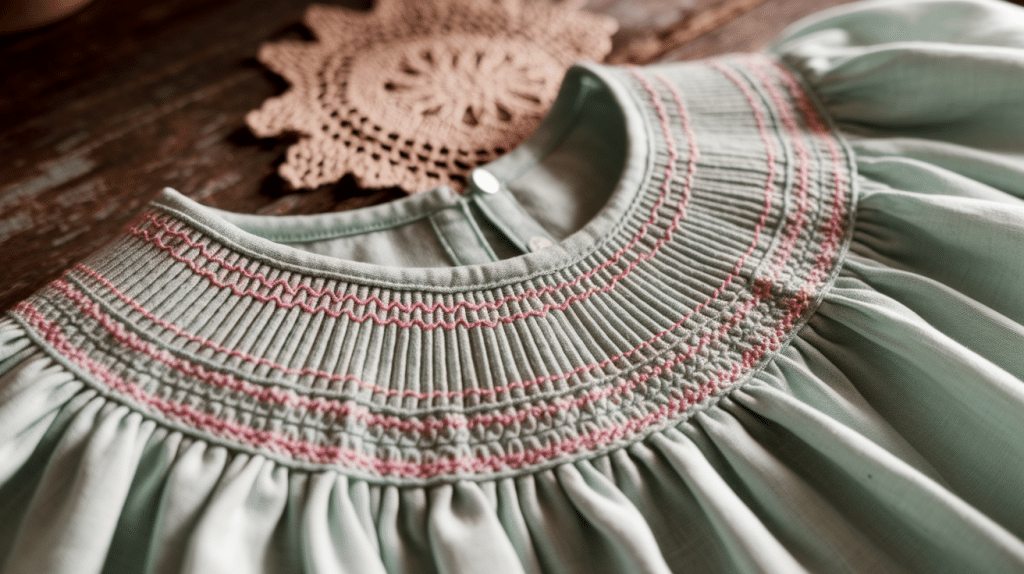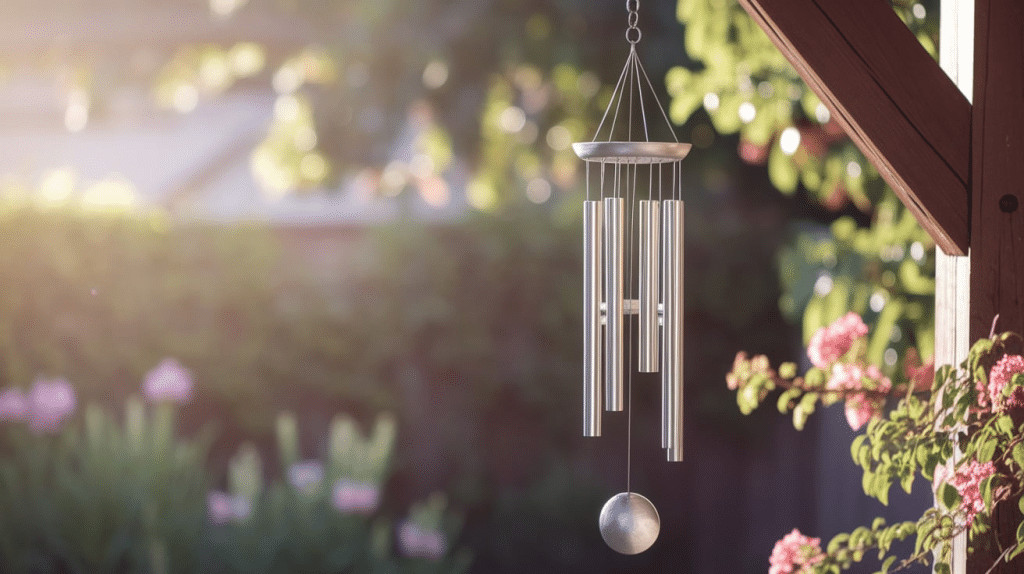Clean, safe water doesn’t happen by chance.
Behind every crystal-clear pool and every glass of tap water stands an unsung hero: free chlorine.
This powerful sanitizer works around the clock, silently protecting you from harmful germs that could make you sick.
But how exactly does it work?
What makes it different from other types of chlorine?
Understanding free chlorine isn’t just for scientists—it’s essential knowledge for anyone who swims, drinks water, or manages any water system.
Let’s examine this common but misunderstood chemical that keeps our water safe day after day.
What is Free Chlorine and How Does It Work?
Free chlorine is your pool’s first line of defense against germs, bacteria, and other unwanted substances in the water.
Think of it as the security guard that stops harmful things before they can cause problems for swimmers.
But what exactly is free chlorine?
Simply put, it’s the portion of chlorine in your pool that’s ready to fight against contaminants.
It hasn’t yet combined with other substances, so it’s “free” to work on killing germs and breaking down waste.
Let’s break this down in simple terms:
- Free chlorine: This is the active form that kills germs and breaks down waste in your pool
- Combined chlorine: When free chlorine has already worked on contaminants, it forms compounds called chloramines
- Total chlorine: This is the sum of both free and combined chlorine in your water
Keeping the right amount of free chlorine in your pool matters a lot.
Most pools need between 2 and 4 parts per million (ppm) of chlorine. Too little chlorine will not keep your pool clean, while too much can irritate skin and eyes.
Regular testing helps you find the sweet spot for your pool.
Benefits of Maintaining Proper Free Chlorine Levels
Keeping the right amount of free chlorine in your water isn’t just a good practice—it’s necessary for safety and health.
Free chlorine works quickly to kill harmful germs, including bacteria, viruses, and tiny plant-like organisms that can turn water green.
This cleaning power makes it one of the most trusted ways to keep water safe.
Most people choose chlorine because it’s:
- Easy to find at most pool stores and hardware shops
- Less costly than many other water cleaning options
- Simple to use with basic safety steps
- Well-understood after many years of use
The Environmental Protection Agency (EPA) has clear rules about chlorine in public water.
Following these rules isn’t optional—it’s required by law for public pools and water systems.
These standards exist to keep everyone safe while swimming in or drinking water.
When you maintain proper free chlorine levels, you’re not just following rules—you’re taking a key step in preventing waterborne sickness and keeping your water system in good shape for years to come.
Common Applications of Free Chlorine
Free chlorine plays a vital role in many water systems we use daily. Here’s where you’ll find it working hard:
1. In Swimming Pools and Hot Tubs
Pool owners rely on free chlorine to keep water clean and clear.
It breaks down body oils, sunscreen, and other things swimmers bring into the water.
Without it, pools would quickly become unsafe for use.
The chemical forms a barrier against harmful organisms that can cause skin rashes, ear infections, and stomach sickness.
Most pool maintenance experts suggest keeping free chlorine levels between 1 and 3 ppm for home pools and slightly higher levels for public pools, where many more people use the water daily.
2. In Drinking Water
Water treatment plants use free chlorine to make tap water safe.
It kills harmful germs that could make people sick.
The chlorine also keeps working in pipes, providing ongoing protection all the way to your faucet.
This process, called “residual disinfection,” helps guard against contamination that might happen after the water leaves the treatment plant.
The standard for drinking water is much lower than pools—typically 0.2 to 0.5 ppm—just enough to protect but not affect taste or smell too much.
Many towns switched to this method of cleaning water over 100 years ago, dramatically reducing waterborne diseases in the process.
3. In Big Buildings and Factories
Large cooling towers need clean water to work properly.
Free chlorine helps keep these systems running well by stopping slime and buildup that could damage equipment.
These industrial systems use chlorine because it’s cost-effective and highly reliable for controlling microorganisms that could cause scaling, clogging, and reduced heat transfer.
The proper levels for these systems typically range from 0.5 to 1.0 ppm, carefully controlled to balance effective cleaning with minimal corrosion.
Regular testing helps prevent both system failure and wasted resources in these critical industrial applications.
4. In Waste Management
Before returning used water to the environment, treatment plants often use chlorine as a final cleaning step.
This helps protect fish, plants, and people who use these natural water bodies.
The chlorine must be carefully measured to kill harmful organisms while not harming the ecosystem that receives the treated water.
Most facilities also include a dechlorination step after the treatment process to remove any remaining chlorine before final discharge.
This careful balance shows how water professionals must consider both human health and environmental protection in their work.
Each application requires specific chlorine levels, but all demonstrate how this fundamental chemical safeguards our water systems while serving different needs across homes, cities, and industries worldwide.
How to Test Free, Combined, and Total Chlorine Accurately
Good water care starts with knowing what’s in your water.
Testing chlorine gives you that key information.
Without proper testing, you’re essentially managing your water system blindly—a risky approach that can lead to health hazards or equipment damage.
Testing Methods and Timing
Pool owners and water pros have several ways to check their water quality.
Test strips offer the simplest option—dip these paper strips in water and watch them change color.
While convenient for quick checks, they don’t provide the precision that serious water management requires.
Drop test kits deliver much greater accuracy, especially those using the FAS-DPD method.
These kits use chemical reactions that change water color in proportion to chlorine concentration, allowing for precise measurement.
The timing of your tests matters almost as much as the method.
Always check your water after events that could affect chlorine levels:
- Following heavy rainfall that might dilute chemicals
- During heat waves, when chlorine depletes faster
- After pool parties or heavy use
- When opening or closing your pool for the season
Most home pools require testing at least twice weekly, while commercial pools need daily monitoring.
Uncovered pools or those in direct sunlight may need more frequent checks as UV rays quickly break down chlorine.
Understanding and Applying Test Results
When you test your water, you’ll measure three key values:
| READING | WHAT IT TELLS YOU | IDEAL RANGE (FOR POOLS) |
|---|---|---|
| Free Chlorine | Amount ready to kill germs | 1-4 ppm |
| Combined Chlorine | Used-up chlorine | Below 0.5 ppm |
| Total Chlorine | Free + Combined | – |
As sanitizer fights contaminants, combined chlorine builds up. Levels over 0.5 ppm cause that strong “pool smell” and eye irritation, signaling it’s time to shock your pool.
Monitor the difference between your measurements regularly. When you see an increasing separation between your readings, it signals that maintenance is needed soon to prevent issues.
NOTE: To calculate your combined chlorine level: Total Chlorine – Free Chlorine = Combined Chlorine
Challenges and Solutions in Free Chlorine Management
Taking care of water systems means addressing several key factors that impact chlorine effectiveness.
Understanding these challenges helps water managers avoid common problems and maintain safe, clean water with minimal effort and expense.
1. Managing Chemical Balance
The pH Factor is perhaps the most critical aspect of chlorine management.
When pH levels rise above 7.8, chlorine’s germ-killing power drops dramatically.
Maintaining a pH between 7.2-7.6 ensures your chlorine works at peak effectiveness.
Think of pH as the on/off switch for your sanitizer—get this wrong, and nothing else matters.
Many water problems that seem like chlorine issues are actually pH problems in disguise.
Even with proper chlorine levels, high pH can render your sanitizer nearly useless, while low pH (below 7.0) can damage equipment and cause skin irritation.
2. Environmental Challenges
Temperature effects create significant hurdles for water managers.
Hot weather creates a double challenge: warm water makes chlorine work faster but also causes it to break down more quickly.
Sunlight exposure also significantly impacts chlorine stability.
UV rays break down free chlorine rapidly, which is why outdoor pools typically require more frequent chemical additions than indoor facilities.
Rainfall dilutes your carefully balanced water chemistry.
After storms, water often requires complete retesting and adjustment to restore proper sanitizing power.
3. Handling Chlorine Demand and Byproducts
When your water suddenly requires more chlorine than usual, you’re facing “chlorine demand.”
This commonly occurs after:
- Heavy pool use during parties
- Storms that introduce organic matter
- Extended periods without maintenance
The solution is to add enough extra chlorine to overcome these temporary demands.
This might require multiple treatments until the water maintains stable chlorine readings.
Successful chlorine management relies on consistent monitoring and prompt adjustments.
Keeping a simple log of test results helps identify patterns and prevent small issues from becoming major problems.
Innovations and Advanced Monitoring Technologies
The world of water testing has evolved significantly with new technologies making maintenance simpler and more reliable.
Next-Generation Sensing Technology
Modern diamond-based sensors can detect minute chlorine changes without the subjective color matching of traditional test kits.
These systems work through electrochemical reactions that produce precise digital readings.
Amperometric sensors offer another leap forward, using tiny electrical currents to measure free chlorine continuously.
Unlike older methods that require constant reagent replacement, these systems can run for months with minimal maintenance.
Real-Time Monitoring Systems
Today’s water professionals increasingly rely on continuous monitoring:
“Our municipal water system switched to real-time chlorine monitoring last year,” explains water treatment specialist James Chen. “We can now spot problems within minutes instead of hours, and our water quality has never been more consistent.”
These systems connect to central control systems or even smartphones, allowing operators to:
- Receive instant alerts when chlorine levels fall outside acceptable ranges
- View historical trends to optimize chemical usage
- Document regulatory compliance automatically
- Make adjustments remotely in some advanced systems
Companies like Sensorex and Blue-White have developed user-friendly interfaces that make these sophisticated systems accessible even to smaller water treatment operations.
The Bottom Line
Free chlorine remains the backbone of water sanitation worldwide, offering reliable protection that few alternatives can match.
Now that you understand how it works, how to test it, and how to manage common challenges, you’re equipped to maintain safer, cleaner water in any system you operate.
Ready to put your knowledge into action?
Start by testing your current free chlorine levels today!
Or, share your biggest water maintenance challenge in the comments below. Our team of experts might feature your question in our next water care article.

